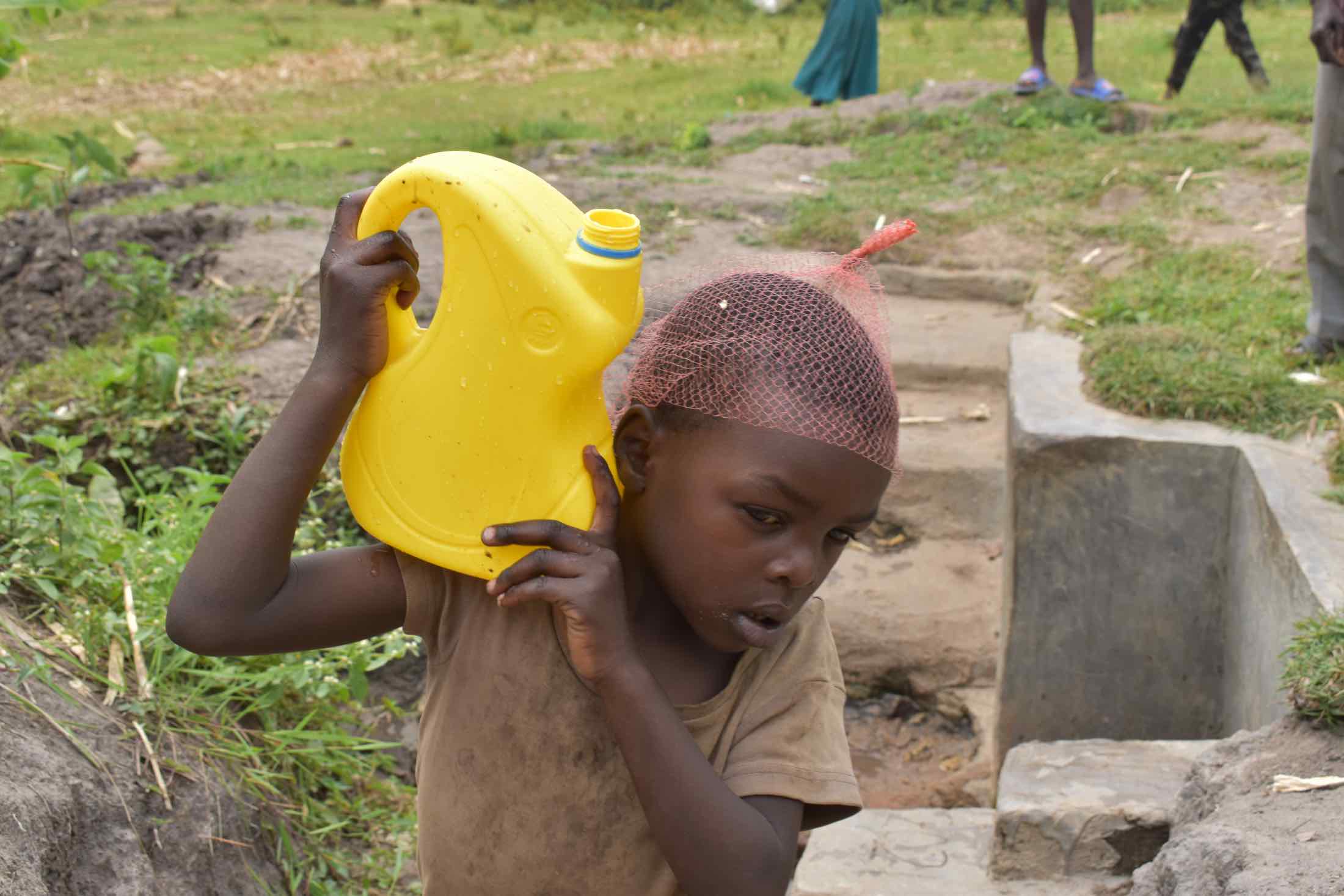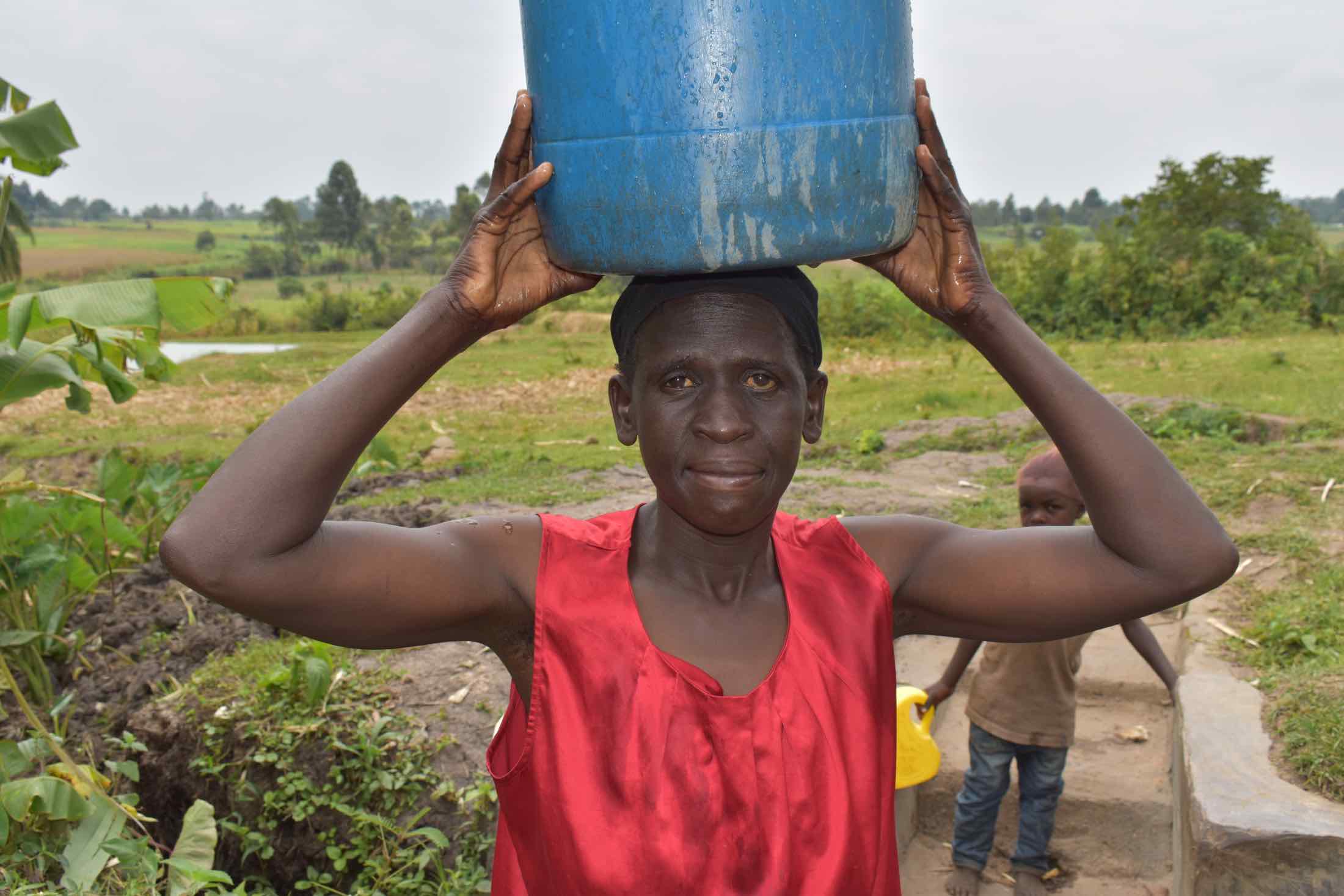To look at Joseph Sunguti Spring now, you wouldn't think it needed much help. But our field officers tell us that the partial protection of this spring is a recent phenomenon that occurred after we first identified this spring met our initial strict project vetting criteria. The benefits of the improvements are already in question.
The spring was partially protected in May 2021 by someone campaigning for a political office. It is not uncommon for political aspirants to fund a small development project for a community during a campaign season.

However, the protection was done inexpertly. Although Joseph Sunguti Spring looks nicer now, the "protection" has done very little to solve the problems of Kalenda A Community.
"Aspirants do a project, but do not have the heart of the community in their minds. Sometimes, the aspirants do not even talk to the community about what they are doing," said Catherine, one of our field officers. "Water is already going through the diversion channels. This community will be exposed to the dangers that we are trying to resolve."
A protected spring's diversion channels divert surface water (which is easily contaminated by people, animals, and surface runoff) away from the filtered water source. This spring, which was only protected a few months ago, is already compromised, and the 230 community members are back to square one.
Now, the people of Kalenda A Community complain of typhoid, cholera, and sore throats from using the contaminated water.

"For a long time now, we have been accessing water that is not clean and safe for use," said local farmer, Sylvia Matula. "[I] am a victim of [a] sore throat infection and this, I can say, is [because of] the water from the spring."
"Going to the spring to fetch water every day in the evening and in the morning has been a challenge to me," said student, Dennis W. "[I] am forced not to have ample time for my studies back at home. [This] has greatly impacted negatively in my examinations."
Because of our connection to this community, and our experience and expertise in spring protections, we believe we can provide a way for this community to have reliable, clean water.
What We Can Do:
Spring Protection
Protecting the spring will help provide access to cleaner and safer water and reduce the time people have to spend to fetch it. Construction will keep surface runoff and other contaminants out of the water. With the community’s high involvement in the process, there should be a good sense of responsibility and ownership for the new clean water source.
Fetching water is a task predominantly carried out by women and young girls. Protecting the spring and offering training and support will, therefore, help empower the female members of the community by freeing up more of their time and energy to engage and invest in income-generating activities and their education.
Training on Health, Hygiene, COVID-19, and More
To hold trainings during the pandemic, we work closely with both community leaders and the local government to approve small groups to attend training. We ask community leaders to invite a select yet representative group of people to attend training who will then act as ambassadors to the rest of the community to share what they learn. We also communicate our expectations of physical distancing and wearing masks for all who choose to attend.
The training will focus on improved hygiene, health, and sanitation habits in this community. We will also have a dedicated session on COVID-19 symptoms, transmission routes, and prevention best practices.
With the community’s input, we will identify key leverage points where they can alter their practices at the personal, household, and community levels to affect change. This training will help to ensure participants have the knowledge they need about healthy practices and their importance to make the most of their water point as soon as water is flowing.
Our team of facilitators will use a variety of methods to train community members. Some of these methods include participatory hygiene and sanitation transformation, asset-based community development, group discussions, handouts, and demonstrations at the spring.
One of the most important issues we plan to cover is the handling, storage, and treatment of water. Having a clean water source will be extremely helpful, but it is useless if water gets contaminated by the time it is consumed. We and the community strongly believe that all of these components will work together to improve living standards here, which will help to unlock the potential for these community members to live better, healthier lives.
We will then conduct a small series of follow-up trainings before transitioning to our regularly scheduled support visits throughout the year.
Training will result in the formation of a water user committee, elected by their peers, that will oversee the operations and maintenance of the spring. The committee will enforce proper behavior around the spring and delegate tasks that will help preserve the site, such as building a fence and digging proper drainage channels. The fence will keep out destructive animals and unwanted waste, and the drainage will keep the area’s mosquito population at a minimum.

 Protected Spring
Protected Spring






































